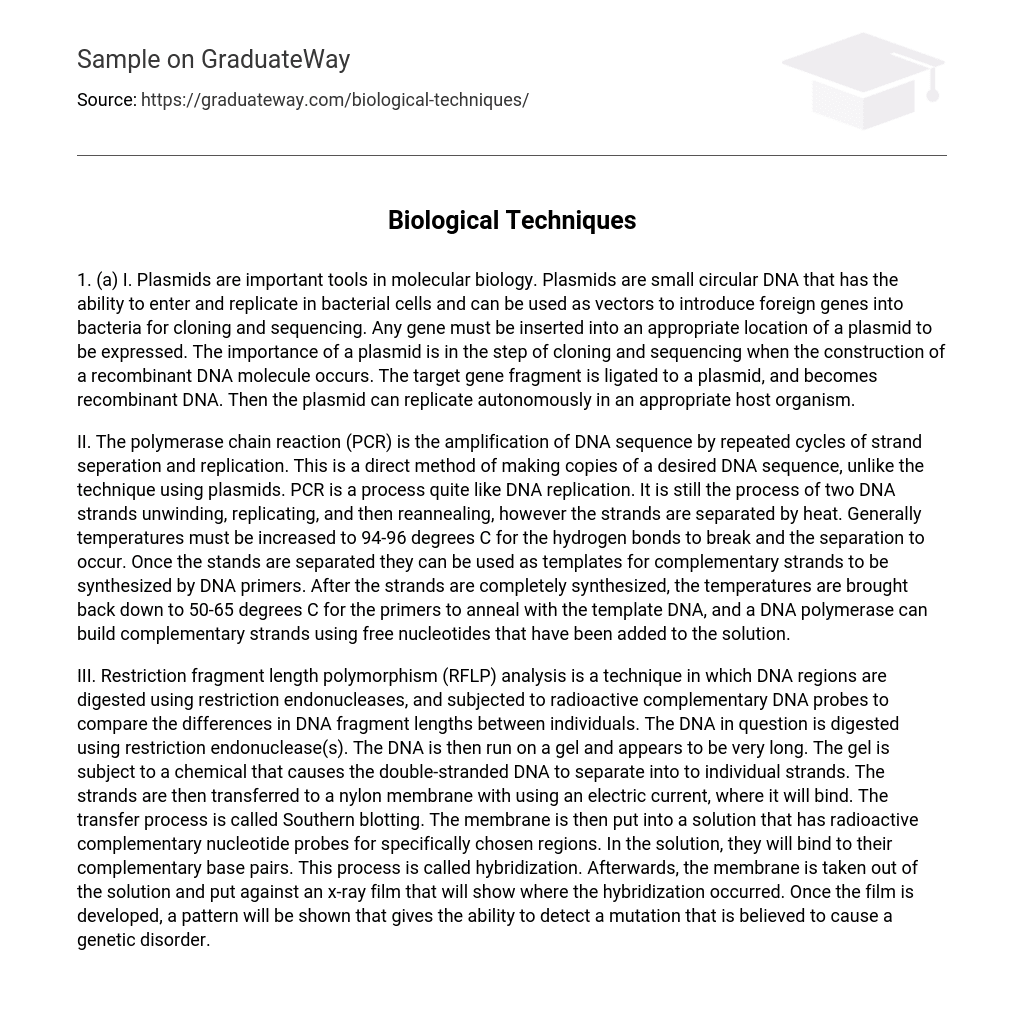I. Plasmids are important tools in molecular biology. Plasmids are small circular DNA that has the ability to enter and replicate in bacterial cells and can be used as vectors to introduce foreign genes into bacteria for cloning and sequencing. Any gene must be inserted into an appropriate location of a plasmid to be expressed. The importance of a plasmid is in the step of cloning and sequencing when the construction of a recombinant DNA molecule occurs. The target gene fragment is ligated to a plasmid, and becomes recombinant DNA. Then the plasmid can replicate autonomously in an appropriate host organism.
II. The polymerase chain reaction (PCR) is the amplification of DNA sequence by repeated cycles of strand seperation and replication. This is a direct method of making copies of a desired DNA sequence, unlike the technique using plasmids. PCR is a process quite like DNA replication. It is still the process of two DNA strands unwinding, replicating, and then reannealing, however the strands are separated by heat. Generally temperatures must be increased to 94-96 degrees C for the hydrogen bonds to break and the separation to occur. Once the stands are separated they can be used as templates for complementary strands to be synthesized by DNA primers. After the strands are completely synthesized, the temperatures are brought back down to 50-65 degrees C for the primers to anneal with the template DNA, and a DNA polymerase can build complementary strands using free nucleotides that have been added to the solution.
III. Restriction fragment length polymorphism (RFLP) analysis is a technique in which DNA regions are digested using restriction endonucleases, and subjected to radioactive complementary DNA probes to compare the differences in DNA fragment lengths between individuals. The DNA in question is digested using restriction endonuclease(s). The DNA is then run on a gel and appears to be very long. The gel is subject to a chemical that causes the double-stranded DNA to separate into to individual strands. The strands are then transferred to a nylon membrane with using an electric current, where it will bind. The transfer process is called Southern blotting. The membrane is then put into a solution that has radioactive complementary nucleotide probes for specifically chosen regions. In the solution, they will bind to their complementary base pairs. This process is called hybridization. Afterwards, the membrane is taken out of the solution and put against an x-ray film that will show where the hybridization occurred. Once the film is developed, a pattern will be shown that gives the ability to detect a mutation that is believed to cause a genetic disorder.





